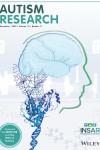Oculomotor randomness is higher in autistic children and increases with the severity of symptoms

A variety of studies have suggested that at least some children with autism spectrum disorder (ASD) view the world differently. Differences in gaze patterns as measured by eye tracking have been demonstrated during visual exploration of images and natural viewing of movies with social content. Here we analyzed the temporal randomness of saccades and blinks during natural viewing of movies, inspired by a recent measure of “randomness” applied to micro-movements of the hand and head in ASD (Torres et al., 2013; Torres & Denisova, 2016). We analyzed a large eye-tracking dataset of 189 ASD and 41 typically developing (TD) children (1–11 years old) who watched three movie clips with social content, each repeated twice. We found that oculomotor measures of randomness, obtained from gamma parameters of inter-saccade intervals (ISI) and blink duration distributions, were significantly higher in the ASD group compared with the TD group and were correlated with the ADOS comparison score, reflecting increased “randomness” in more severe cases. Moreover, these measures of randomness decreased with age, as well as with higher cognitive scores in both groups and were consistent across repeated viewing of each movie clip. Highly “random” eye movements in ASD children could be associated with high “neural variability” or noise, poor sensory-motor control, or weak engagement with the movies. These findings could contribute to the future development of
.oculomotor biomarkers as part of an integrative diagnostic tool for ASD
תאריך עדכון אחרון : 31/12/2025



